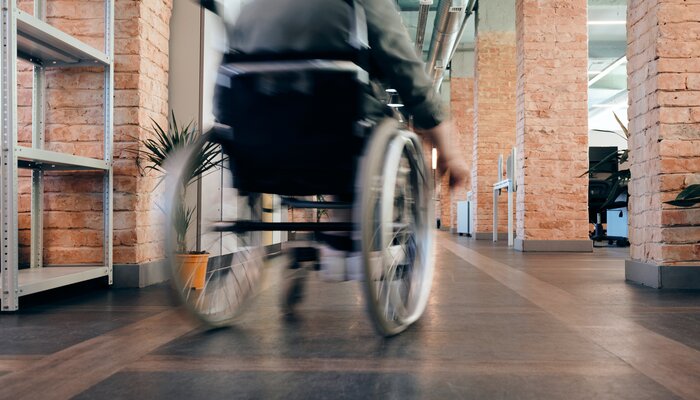Injuries - a term that sparks discomfort, confusion, and sometimes fears. Despite this, we can't overlook that injuries are a common part of our lives, whether we're top-tier athletes or work-from-home freelancers. To navigate this unavoidable aspect of life, it's crucial to have a comprehensive understanding of the types and classifications of injuries.
How Do You Define Injuries?
Injuries can be seen as uninvited guests that throw a wrench in the machinery of our bodies. While the term 'injury' is often associated with a sudden, painful event, it extends far beyond the scope of this narrow perspective. Broadly defined, an injury is any form of damage or harm inflicted upon the structure or function of the body due to an external force.
This force doesn't necessarily have to be sudden or violent; it can occur gradually over time, such as in the case of overuse injuries or stress-related conditions. This external force instigating the injury can present itself in multiple forms. A physical force could lead to a bone fracture from a nasty fall, a torn muscle from an overly vigorous gym session, or a sprained ankle from a misstep during a casual jog.
Biological forces include bites, stings, scratches from animals and insects, or infections from bacteria, viruses, or other microorganisms that can damage our bodies. Chemical forces relate to exposure or ingesting harmful substances, leading to conditions like chemical burns, poisoning, or allergic reactions.
The resulting injuries manifest in various ways, too. Some appear instantly, accompanied by sharp pain or visible symptoms like swelling, bruising, or bleeding. Others creep in subtly, progressively worsening over weeks or months, often presenting as chronic painLong-lasting pain that persists beyond the usual recovery period or occurs along with a chronic heal..., discomfort, or gradual loss of normal function.
Importance of Understanding Injuries
At first glance, understanding injuries is an area of interest only for medical professionals. However, the more you dive into it, the clearer it becomes that everyone stands to benefit from this knowledge. But why?
Firstly, understanding injuries helps us respond more effectively when they occur. An informed perspective allows us to assess the severity of the injury, apply appropriate first aid measures, and seek timely professional help when necessary.
Secondly, recognizing the different types of injuries empowers us to devise effective strategies to deal with them. For example, knowing the specific exercises that help rehabilitate a torn muscle, understanding the rest and recuperation needed for a stress fracture, or the lifestyle modifications required to manage chronic back pain can dramatically improve recovery outcomes.
Furthermore, comprehending how and why injuries occur allows us to prevent potential future occurrences. Knowing what caused the injury, we can change our actions, habits, or environments to minimize risk. This could mean adjusting our sports techniques, making our homes safer, using protective gear, or improving our overall fitness and health.
Finally, a deep understanding of injuries paves the way for quicker and more efficient recovery. Knowledge is power, after all. By knowing what to expect during the recovery process, we can better manage our expectations, adhere to recommended treatments, and actively participate in our own healing journey. The psychological boost that comes from this can be just as beneficial as the physical treatment itself.
Understanding injuries is like being equipped with a roadmap during a challenging journey. It doesn't necessarily make the journey easy, but it makes it more navigable, less daunting, and enlightening.
Classification of Injuries
Acute Injuries
Characteristics of Acute Injuries
Acute injuries occurs suddenly during activity. Common examples include fractures, sprains, and contusions. They are often accompanied by sharp, severe pain, swelling, or visible dislocation or deformation. Swift and appropriate medical attention is critical for acute injuries.
Chronic Injuries
Characteristics of Chronic Injuries
Chronic injuries, on the other hand, develop over a longer period. They often stem from overuse or improper technique, resulting in tendonitis, stress fractures, or osteoarthritis. These injuries often present as persistent or recurring pain, stiffness, or discomfort in the affected area.
Overuse Injuries
Characteristics of Overuse Injuries
Overuse injuries are a subset of chronic injuries, often resulting from repetitive motion or stress on a particular body part. These can include tennis elbow, shin splints, or carpal tunnel syndromeA condition causing numbness, tingling, or weakness in the hand, due to pressure on the median nerve.... They require a keen eye to detect early and often need modifications in activity levels or techniques for effective treatment.
Coping with Different Types of Injuries
Knowing how to cope with different injuries is just as important as understanding what they are. For acute injuries, immediate medical attention followed by rest, ice, compression, and elevation (the RICE method) often help. On the other hand, chronic and overuse injuries may require lifestyle or activity modifications, physiotherapy, and sometimes, even surgery.
Prevention of Injuries
Prevention is better than cure, especially regarding injuries. Regular physical exercise, adequate warm-up and cool-down, proper technique, and protective gear can significantly reduce the risk of acute and chronic injuries. Moreover, listening to your body and not pushing beyond your limits is equally important.
The Role of a Personal Injury Lawyer in Your Recovery Journey
Injuries can often take more than just a physical toll on individuals. They can lead to financial strains from medical expenses, lost wages, and other related costs. In such cases, navigating the complex world of legal rights and claims can be overwhelming, making the services of a personal injury lawyer indispensable.
A personal injury lawyer is a legal expert who provides representationThe way people with disabilities are depicted in media, culture, and politics, often influencing pub... to individuals who have been physically or psychologically injured as a result of negligenceA legal concept where a party fails to exercise reasonable care, resulting in harm to another person... or wrongdoing by another party. These attorneys specialize in an area of law known as tort law, which includes private or civil wrongs, including defamation and breach of contract.
Engaging a personal injury lawyer provides the much-needed advocacyThe act of arguing in favor of, supporting, or defending the rights and interests of individuals or ... and guidance to ensure that your rights are protected and that you obtain the compensation you deserve. These legal professionals thoroughly understand how the personal injury system works and can guide you through each step, from filing your claim to negotiating settlements and, if necessary, representing you in court.
Personal injury lawyers play a vital role in leveling the playing field. Insurance companies have experienced attorneys working on their side, and you deserve the same level of legal representation to stand a fair chance in your pursuit of justice.
Apart from handling the legal aspects, personal injury lawyers also offer peace of mind. With an expert looking after your legal matters, you can focus solely on your recovery. They stand as your advocate, your counselor, and your ally during what can be a challenging time in your life.
FAQs
1. What is the difference between an acute injury and a chronic injury?
Acute and chronic injuries differ in their onset and development. An acute injury happens suddenly, often due to a specific incident or trauma such as a fall, a collision, or a sudden twist. They are typically characterized by sharp, intense pain, swelling, or visible deformity. Examples include sprains, fractures, or cuts.
Chronic injuries, in contrast, develop over time and are often related to repetitive activities or prolonged pressure on a particular body part. These types of injuries may start with mild symptoms that gradually worsen over time. Common chronic injuries include stress fractures, tendinitis, and osteoarthritis.
2. Can chronic injuries be prevented?
Yes, many chronic injuries can be prevented. Prevention strategies often involve maintaining a balanced and varied exercise regimen, using proper equipment and technique, and allowing adequate rest and recovery time for your body. Regularly changing your exercise routine to avoid overloading one part of your body and incorporating strength training to build resilient muscles and tissues can also help prevent chronic injuries.
3. How are overuse injuries treated?
Overuse injuries, a subset of chronic injuries, are typically treated through a combination of rest, physical therapy, and modifications to exercise routines. Initial treatment often involves resting the injured area to allow for healing and reducing inflammation and pain.
Physical therapy can help strengthen the affected area and improve flexibility and function. In some cases, changing the way you exercise or using different equipment may be necessary to prevent further injury. In severe cases, surgical interventionMedical treatment involving an operation to correct or treat a health condition. might be required.
4. What is the most common type of injury?
The most common type of injury varies depending on the context. In sports, for instance, sprains and strains are frequently seen. In the workplace, overuse injuries, such as carpal tunnel syndrome are common. Among older adults, falls leading to fractures are prevalent. However, in a broader context, bruises or contusions are among the most common injuries in the general population.
5. How can I reduce the risk of getting injured?
Reducing the risk of injury involves a holistic approach to health and safety. Regular exercise, proper nutrition, and adequate sleep can all contribute to a stronger, more resilient body.
When engaging in physical activity, warming up and cooling down, using proper technique and equipment, and avoiding overtraining can prevent many acute and chronic injuries. In everyday life, adhering to safety guidelines and precautions, such as using seatbelts in cars or wearing appropriate protective gear for certain activities, can significantly reduce injury risk.
Conclusion
Understanding the classification of injuries arms us with the ability to manage, treat, and even prevent them effectively. By recognizing the signs of acute, chronic, and overuse injuries, we can take proactive steps toward better health and well-being.
Learn how to file a personal injury claim to further your case with a professional personal injury lawyer by reading through our blogs at Disability Help today.






